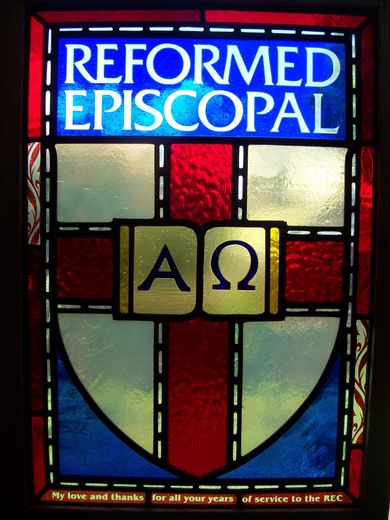The Reformed Episcopal Church
The Reformed Episcopal Church
The Reformed Episcopal Church was organized in New York City in 1873 by eight clergymen and twenty laymen who were formerly priests and members of the Protestant Episcopal Church (not yet called The Episcopal Church). A long debate over the excessive ritualism and exclusive attitude of the Protestant Episcopal Church toward other denominations lay behind the separation. The immediate cause of the division lay in the participation of Bishop George David Cummins, Assistant Bishop of Kentucky, at a Communion Service held in the Fifth Avenue Presbyterian Church in New York City. In the face of criticism and with the conviction that the evangelical and catholic nature and mission of the Protestant Episcopal Church were being lost, Bishop Cummins resigned as Assistant Bishop of Kentucky and transferred his Episcopal oversight to a new jurisdiction called the Reformed Episcopal Church.
Doctrine and organization of the Reformed Episcopal Church are similar to that of the Episcopal Church with several important exceptions:
Holy Scripture is the highest authority in the Reformed Episcopal Church.
The Reformed Episcopal Church vigorously holds to the plain understanding of the 39 Articles of Religion of the English Reformation and adopted them as the doctrinal standard of the Church at her founding.
Clergymen ordained as Presbyters in other churches may be received into the ministry of the Reformed Episcopal Church. If their ordination is irregular, such orders must be regularized by the laying on of hands of a Bishop. Members are admitted on letters of dismissal from other Protestant denominations.
Worship is liturgical. At Sunday morning worship, the use of the Prayer Book, recently revised to conform with the 1662 Book of Common Prayer (BCP), is required. The 1928 BCP is also authorized for use. At other services the use of the Prayer book is optional while at any service extemporaneous prayer may be used by the minister.
The triennial General Council of the Reformed Episcopal Church is not like the General Convention of the Episcopal Church USA since her bishops do not constitute a separate house but, rather, vote with the Clergy.
The REC has developed independently of the Episcopal Church’s debates about women’s ordination, prayer-book revision, and unscriptural sexualities. We preserved a conservative Anglican heritage and prayer book. We stayed close to an evangelical understanding of Scripture. And while we were often a bit preservationist in our outlook and for a time lacked great energy for evangelism, we were nonetheless poised to address the needs of the 21st century. With the growth of Anglicanism worldwide and theological crises within American Episcopalianism, the REC began to awaken from its slumber and has since worked with great zeal to heal old rifts, work together with partners with common vision, and evangelize the lost in our nation.
The REC is in fellowship through concordat with the Free Church of England (otherwise known as the Reformed Episcopal Church in England), the Anglican Province of America and the Anglican Church of Nigeria (Anglican Communion). We were members of the Common Cause Partnership and have been instrumental in the formation of the Anglican Church in North America, of which we are a participant jurisdiction, joined in mission and communion with the vast majority of Anglicans worldwide.

Worship Address
3195 A Airport Blvd.
Wilson, NC 27896
Mailing Address
PO Box 2511
Wilson, NC 27894
Vicar
The Rev. Dr. Paul C. Edgerton
252.230.8754
paul.edgerton@redeemerwilson.com